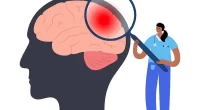Pancreatic cancer treatments & new drug screening: A beam of hope for patients – A cancer mutation that boosts cholesterol production in pancreatic cells may be vulnerable to a common heart drug, according to a new study. Researchers used lab-grown tumor models to identify perhexiline maleate, which significantly shrank these models by lowering cholesterol levels. This finding could lead to innovative therapies for pancreatic cancer.
In the groundbreaking study, Dr. Shuibing Chen and colleagues at Weill Cornell Medicine shine a light on the vital role of genetically well-defined organoids in unlocking the secrets of cancer. This innovative approach promises to revolutionize our understanding of tumor development and pave the way for the discovery of more effective therapeutic strategies. By accurately replicating the genetic fingerprint of tumors, these miniaturized organ models offer an unprecedented platform for testing personalized medicine approaches and predicting treatment response.
An organoid-based tumor screening method – Organoids are now commonly used instruments in the study of tissues in both health and illness. They can be genetically modified for precise modeling, they can be fashioned from human or animal tissue, and they can replicate a large portion of the intricate architecture of an organ. Additionally, organoids with their cancer-causing gene alterations can mimic particular tumor forms. In fact, these tumor organoids may be able to simulate human tumors more accurately than any animal model when they are made from human tissue.
For pancreatic ductal adenocarcinoma (PDAC), the most frequent and deadly type of pancreatic cancer, the researchers in the study put up an organoid-based automated drug-screening system.
Created using normal mouse pancreatic tissue, the organoids were modified to include several combinations of mutations that are known to cause pancreatic cancers in humans. KrasG12D, the mouse variant of a cancer-causing mutant gene present in the majority of PDAC cases, was present in all the organoids.
The researchers gave the organoids tests on a library of over 6,000 compounds, some of which were FDA-approved medications, and found that several of them might significantly impair the organoids’ ability to grow. The most effective of these was perhexiline maleate, an antiquated medication used to treat angina. All KrasG12D-containing organoids were prevented from growing by a low dosage of the medication, which also killed some of them completely in a matter of days. However, healthy organoids without the mutation were unaffected by the medication. When the medication was applied to human tumor organoids with different types of Kras mutations as well as PDAC-derived tumor organoids from mice, the results were comparable.
Through the analysis of gene activity patterns in both treated and untreated organoids, the researchers discovered that perhexiline maleate counteracts the effects of cancer-associated mutant Kras, which significantly increases the production of cholesterol in organoid cells, by blocking SREBP2, a crucial regulatory factor in the cholesterol metabolic pathway.
One new target for cancer is cholesterol. The significance of cholesterol was not totally unexpected, since it is a necessary building block for the synthesis of new cells and it is known to play a significant role in maintaining the malignant growth of some other cancers, such as lung tumors. The findings now imply that focusing on it might be a successful new PDAC treatment approach.
The efficacy of perhexiline maleate in human organoids with multiple Kras mutations also implies that hypercharged cholesterol production may be a generic therapeutic target for malignancies with KRAS mutations.
Dr. Evans, who is also affiliated with the Sandra and Edward Meyer Cancer Center, stated, “We hope that our cholesterol-targeting strategy will be independent of particular KRAS mutations and will make it hard for treated tumors to evolve resistance.”
The use of phenexiline maleate in its current form to treat PDAC is uncertain. It can have major adverse effects, such as liver damage and peripheral nerve damage, which is why it was removed from numerous European markets in the 1980s and was never approved in the United States, even though it is currently used as an angina medication in Australia and some other countries.
Dr. Chen stated, “We want a better compound for cancer treatment.” She stated that because of the drug’s straightforward chemical structure, it is likely possible to alter it to enhance its effectiveness, safety, bloodstream half-life, and other characteristics.
Perhexiline maleate will now be employed by the researchers as a beginning point for the creation of a more potent potential PDAC medication as well as a lab instrument for researching cholesterol production in PDAC and other malignancies. Study source
Also read: Black Women Have High Rate Of Endometrial Cancer – Study Reveals








